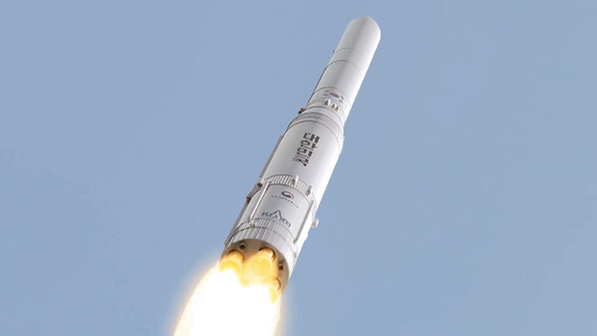Input 2021.03.25 16:45 | Revision 2021.03.25 22:12
President Wen “In fact, development is complete…only launch is left”
“Our satellites as our launch vehicles… please realize the dream of a space powerhouse”

The Ministry of Science and Technology Information and Communication announced that it conducted the final comprehensive combustion test of the Nuri at the Narouju Center in Goheung, Jeollanam-do at 3 pm on the same day to confirm the performance and durability of the first-stage engine.

Six engines made with domestic technology will be installed on the Nuri. Four engines that produce 75 tons (ton) of propulsion are installed in the first stage, which is the lowest part of the 1st to 3rd stages that make up the rocket and requires the greatest thrust. By applying the’clustering’ technology that binds these four units into one, it operates like one 300t class engine. This is because it is technically easier to make four 75t class medium-sized engines than to make one 300t class large engine.

Minister of Science and Technology Choi Ki-young said last month, “If you succeed (this test), you will pass the most technically difficult test before launch.” An official of the Korea Aerospace Research Institute also said, “This test was the last technically remaining gateway.” Although the launch schedule has been delayed several times due to technical problems, it is expected that the Nuri will be able to meet the launch schedule in October without further delay by passing this test.


Hang Woo-yeon prepared the’Comprehensive Combustion Test Automatic Operation Procedure (PLO)’, an automated system for engine ignition at 2:50 pm on the same day. Ten minutes later, at 3pm, the four first-stage engines were on fire by the automated system, and the 127-second combustion test was over. As a result, the Nuri will go through a launch pad certification test, and will be launched in October.
The Nouriho was developed to launch an artificial satellite that weighs 1.5 tons, like the Arirang satellite, with our own power. It will be used first to launch light satellites from next year. By 2026, seven micro-satellites and small satellites weighing several tens of kilograms and three next-generation medium-sized satellites weighing about 500 kilograms will be loaded and launched. The next-generation medium-sized satellite 3 is the successor to the next-generation medium-sized satellite 1 launched on the 22nd. Private companies will lead the development by introducing platform technology that can quickly create satellites at low cost.
